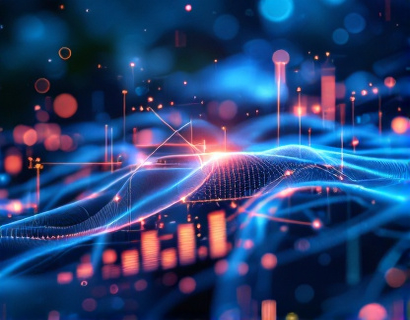Ucosystem Demystified: A Beginner's Guide to Navigating Interconnected Complexity
The term Ucosystem has become increasingly prevalent in discussions around technology, business, and innovation. For many, it remains a complex and somewhat abstract concept. This guide aims to demystify the Ucosystem, breaking down its components and highlighting the key benefits. By the end of this article, readers will have a clearer understanding of how to navigate this interconnected landscape effectively.
To begin, it's essential to understand what the Ucosystem truly represents. At its core, the Ucosystem is a network of interconnected systems, platforms, and services that work together to create a seamless and integrated experience for users. This ecosystem is not limited to a specific industry or technology but spans across various domains, including software, hardware, data, and human interactions.
Understanding the Components of the Ucosystem
The Ucosystem comprises several key components, each playing a crucial role in the overall functionality and efficiency of the network. These components include:
- Platforms: Central hubs that connect various services and applications. Examples include operating systems, marketplaces, and social media platforms.
- APIs (Application Programming Interfaces): These are the bridges that allow different systems to communicate and exchange data seamlessly.
- Data: The lifeblood of the Ucosystem, data is collected, analyzed, and utilized to improve services and create personalized experiences.
- Devices: From smartphones to IoT devices, these are the physical and digital tools that users interact with to access and utilize Ucosystem services.
- Users: The human element, whose interactions and behaviors drive the ecosystem's growth and evolution.
Each of these components is interdependent, and their synergy is what makes the Ucosystem powerful and efficient. Platforms rely on APIs to function, data fuels innovation and personalization, devices enable access, and users provide the necessary engagement and feedback.
Benefits of the Ucosystem
The Ucosystem offers numerous benefits that enhance both individual and collective experiences. Some of the key advantages include:
1. Enhanced Efficiency: By integrating various services and systems, the Ucosystem reduces redundancy and streamlines processes. This leads to faster and more efficient task completion.
2. Improved User Experience: The interconnected nature of the Ucosystem allows for personalized and context-aware services. Users benefit from tailored recommendations, seamless transitions between services, and a more intuitive interface.
3. Innovation and Growth: The collaborative environment of the Ucosystem fosters innovation. Developers and businesses can build upon existing platforms and APIs, leading to new and exciting applications and services.
4. Scalability: The modular design of the Ucosystem enables easy scaling. As demand grows, additional resources and services can be integrated without disrupting the existing structure.
5. Data-Driven Insights: The vast amount of data generated within the Ucosystem provides valuable insights into user behavior, preferences, and trends. This data can be leveraged to make informed decisions and drive continuous improvement.
Navigating the Ucosystem
Navigating the Ucosystem can seem daunting due to its complexity, but with the right approach, it becomes manageable. Here are some strategies to effectively navigate and leverage the Ucosystem:
1. Start with the Basics: Begin by understanding the fundamental components of the Ucosystem. Familiarize yourself with key platforms, APIs, and data types. This foundational knowledge will serve as a solid base for deeper exploration.
2. Identify Your Goals: Determine what you aim to achieve within the Ucosystem. Whether it's developing a new application, improving a service, or simply understanding user behavior, clear goals will guide your navigation.
3. Utilize Documentation and Resources: Most platforms and services provide comprehensive documentation and resources. These are invaluable for understanding how to integrate and utilize various components effectively.
4. Engage with the Community: The Ucosystem thrives on collaboration. Join forums, attend conferences, and participate in online communities to connect with others who share your interests and challenges.
5. Experiment and Iterate: Don't be afraid to experiment with different services and APIs. Testing and iterating based on feedback and results is crucial for optimizing your approach and achieving your goals.
Case Studies: Real-World Applications of the Ucosystem
To better understand the practical applications of the Ucosystem, let's explore a few real-world examples:
1. Smart Home Ecosystem: Devices like smart speakers, thermostats, and security cameras work together through interconnected platforms and APIs. Users can control multiple devices with a single voice command, enhancing convenience and energy efficiency.
2. Healthcare Platforms: Electronic health records (EHRs), telemedicine services, and wearable health devices form a Ucosystem that improves patient care. Data from various sources is integrated to provide comprehensive health insights and personalized treatment plans.
3. Financial Technology (FinTech): Banking apps, payment gateways, and investment platforms collaborate through APIs to offer users a seamless financial experience. This ecosystem enables real-time transactions, budgeting tools, and investment tracking all in one place.
Challenges and Considerations
While the Ucosystem offers numerous benefits, it also presents certain challenges and considerations:
1. Privacy and Security: The interconnected nature of the Ucosystem increases the risk of data breaches and privacy violations. It's crucial to implement robust security measures and adhere to data protection regulations.
2. Interoperability: Ensuring that different systems and services can work together seamlessly remains a challenge. Standardization and open protocols are essential to overcome this hurdle.
3. Complexity Management: The sheer complexity of the Ucosystem can be overwhelming. Tools and frameworks that simplify integration and management are vital for developers and businesses.
Future Trends in the Ucosystem
The Ucosystem is continuously evolving, driven by technological advancements and changing user needs. Some key trends to watch include:
1. Artificial Intelligence and Machine Learning: AI and ML are becoming integral to the Ucosystem, enabling more intelligent and adaptive services. These technologies enhance personalization, automation, and predictive analytics.
2. Edge Computing: As IoT devices proliferate, edge computing will play a crucial role in processing data closer to the source, reducing latency and improving response times.
3. Decentralized Systems: Blockchain and decentralized technologies are gaining traction, offering new ways to ensure security, transparency, and user control within the Ucosystem.
4. Sustainability: There is a growing focus on building sustainable Uecosystems that minimize environmental impact and promote ethical practices. This includes energy-efficient data centers and responsible data management.
Conclusion
The Ucosystem is a powerful and dynamic network that offers immense potential for innovation and improvement. By understanding its components, benefits, and challenges, individuals can navigate this landscape more effectively. As technology continues to advance, the Ucosystem will evolve, presenting new opportunities and challenges. Embracing this ecosystem with a curious and adaptable mindset will be key to thriving in the future.










































